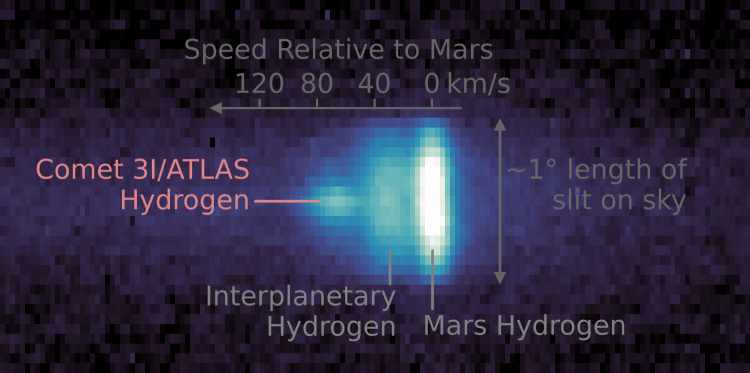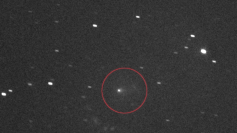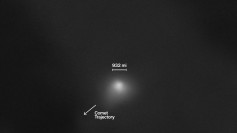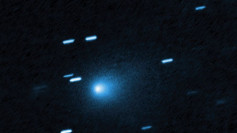ISRO and NASA have released the most detailed images to date of 3I/ATLAS, the third confirmed interstellar object to pass through Earth's solar system, giving researchers a rare opportunity to study a comet originating from beyond the Sun's gravitational influence. The new data-drawn from telescopes in India and a suite of U.S. spacecraft orbiting Mars and transiting the outer solar system-captured the comet as it moved deeper into the inner solar system in late 2025.
The Indian Space Research Organisation disclosed an image taken from its 1.2-meter Mount Abu telescope, showing a bright, condensed nucleus surrounded by a faint greenish-blue haze of gas and dust. ISRO scientists reported that spectroscopic measurements collected during the November observation identified familiar cometary gas signatures and indicated that material was being released at a rate consistent with long-period comets native to the Oort Cloud.
The classification has made 3I/ATLAS a scientific priority. As an interstellar body-preceded only by 'Oumuamua in 2017 and comet 2I/Borisov in 2019-the object arrived from a distant star system, carrying material shaped by conditions outside the Sun's domain. Researchers say its foreign origin makes even familiar behavior valuable for comparative analysis.
NASA's newly released images were collected by multiple spacecraft positioned across the solar system. The Mars Reconnaissance Orbiter's HiRISE camera captured a view of the comet on October 2, when it passed within 18.6 million miles of Mars. A separate ultraviolet observation from NASA's MAVEN probe recorded a halo of hydrogen surrounding the comet, indicating that solar radiation was splitting water molecules as the object heated during its approach to the Sun.
Additional images came from NASA's Lucy spacecraft, now en route to Jupiter's Trojan asteroids. From roughly 240 million miles away, Lucy recorded a faint central core enveloped by a diffuse atmosphere and a thin, elongated tail. The images were assembled from a sequence of exposures taken over multiple days.
NASA stated in an earlier assessment that "all evidence points to it being a comet," addressing speculation circulating online that the object might exhibit non-natural behavior. The space agency said the physical and chemical characteristics observed so far align with expectations for a volatile-rich interstellar body.
At the same time, new James Webb Space Telescope data have revealed an unusually high carbon-dioxide-to-water ratio surrounding the coma, diverging sharply from typical ratios in comets that formed within the early solar system. Researchers say this composition suggests the comet condensed in an environment with a markedly different chemical balance, offering rare clues about planetary formation around other stars.
Astronomers caution that 3I/ATLAS remains faint and difficult to view, even with advanced equipment. The comet is moving rapidly away from the Sun and will become increasingly inaccessible to optical instruments in the coming weeks. But the information collected during its brief passage is expected to support years of analysis, particularly as researchers study differences between interstellar ice compositions, dust structures, and outgassing rates.






